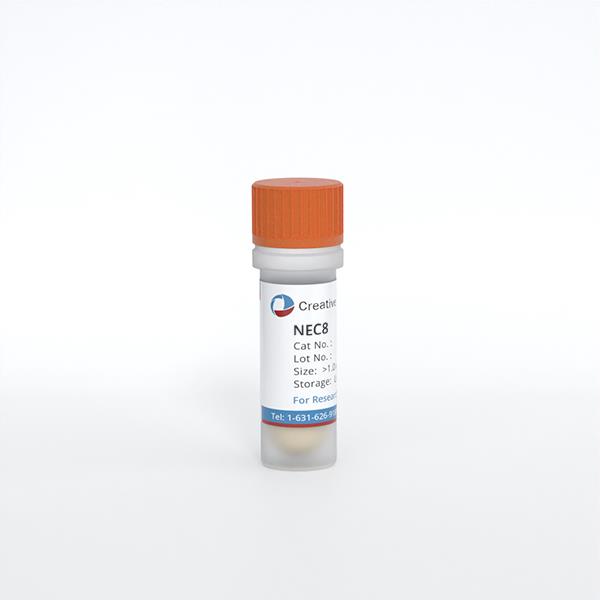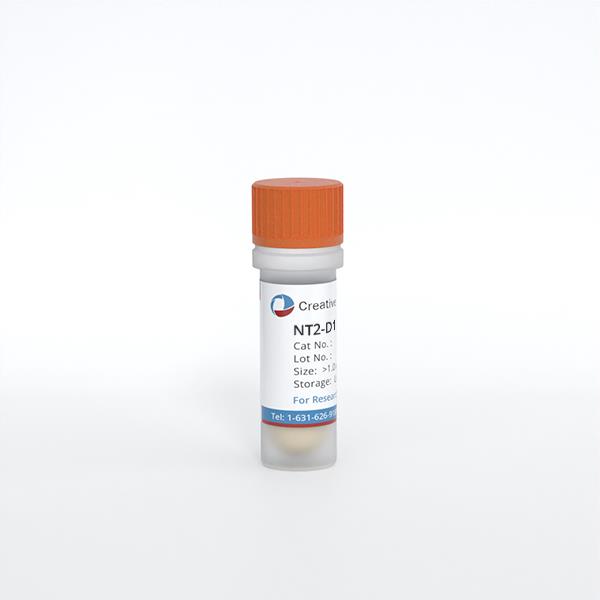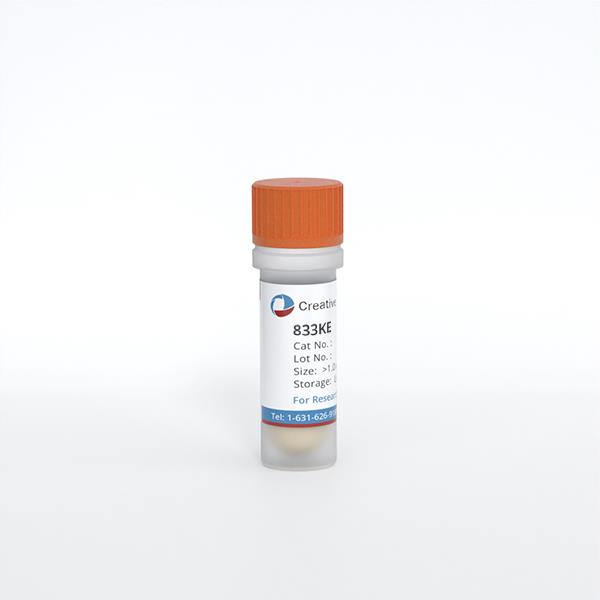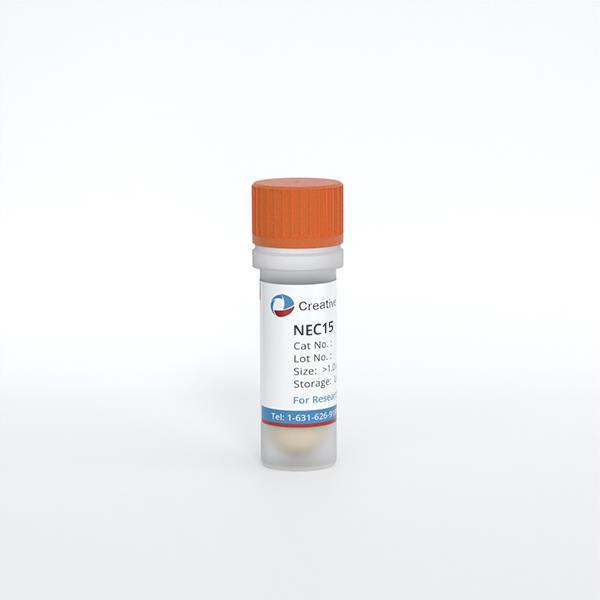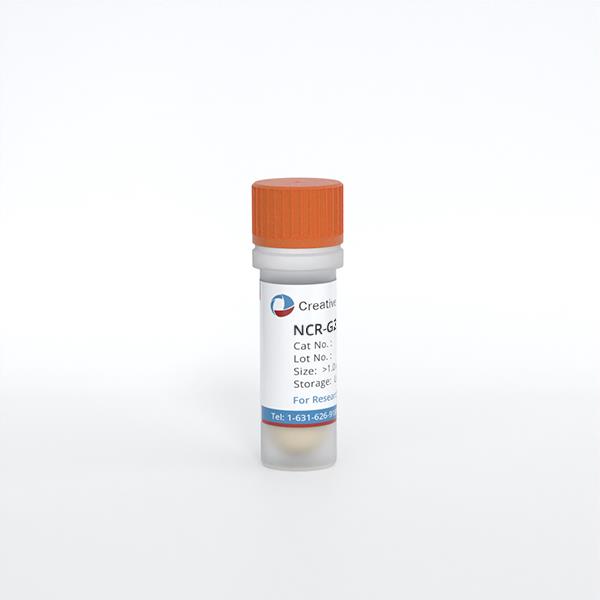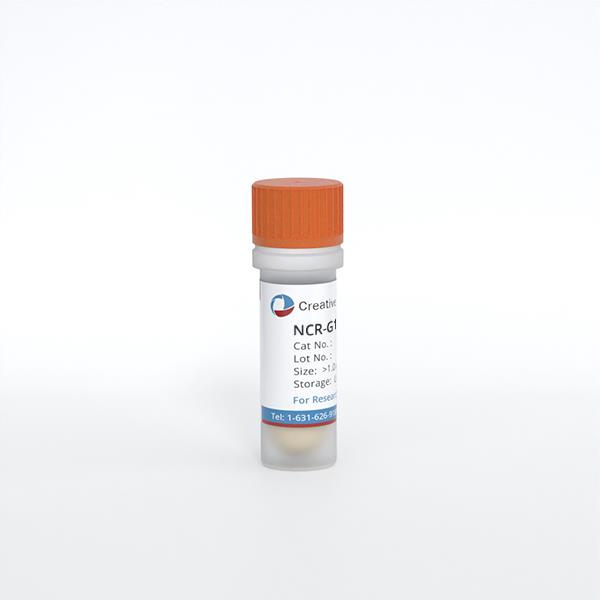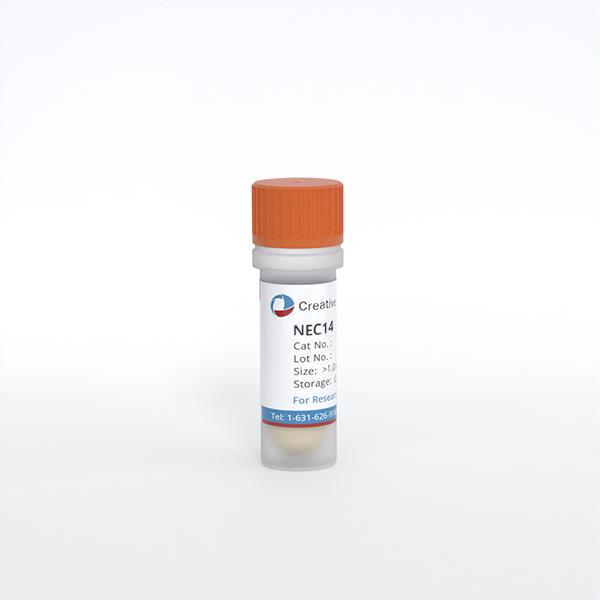
NEC14
Cat.No.: CSC-C6498J
Species: Homo sapiens (Human)
Source: Testis
Morphology: other
Culture Properties: Adherent cells
- Specification
- Background
- Scientific Data
- Q & A
- Customer Review
Store in liquid nitrogen.
The NEC14 cell line originates from human testicular germ cell tumors and belongs to the embryonal carcinoma group. The NEC14 cell line represents an undifferentiated germ cell tumor which proliferates rapidly and acts as a crucial model for studying molecular cancer development and cellular differentiation pathways.
The cell line displays various tumor-associated genes within the Nectin-like family category including Nec14, Nec11, and Nec3. These proteins maintain essential roles in both cell adhesion and synapse formation processes while they support myelination. Research on depression and anxiety benefits from Nec14 cell line which holds key functional roles within central nervous system operations. Depressive and anxiety-like behaviors manifest in mice lacking Nec14 due to its regulatory effects on neurotransmitters and synaptic structures. Male infertility develops through the interaction between Nec14 and the 4.1G protein because 4.1G controls myelination. Furthermore, NEC14 cells display multiple undifferentiated markers when they maintain their undifferentiated state which includes TRA-1-60 and both SSEA-1 and SSEA-3. Marker expression levels show significant reduction following induction of differentiation. NEC14 cells also control the expression patterns of stem cell-related genes such as PAX2, PAX5, and OCT3/4.
Dimethyl Sulfoxide Induces Chemotherapeutic Resistance in the Treatment of Testicular Embryonal Carcinomas
DMSO is widely used as a solvent for chemotherapeutic drugs like CDDP in treating testicular embryonal carcinomas (ECs). However, it may induce differentiation and reduce drug efficacy in EC cells. Kita et al. investigated the effects of DMSO on two human EC cell lines (NEC8 and NEC14) by evaluating CDDP resistance, differentiation markers (Vimentin, Fibronectin, TRA-1-60, SSEA-1 and -3), stemness markers (SOX2 and OCT3/4), and DNA methylation status.
Results showed that DMSO significantly increased resistance to CDDP in NEC8 and NEC14 cells. CDDP resistance in NEC8 cells increased up to three times compared to control levels following exposure to 0.8% DMSO since the IC50 values rose from 4.1 µM to 11.6 µM (Fig. 1A). NEC14 cells demonstrated approximately three times greater resistance to CDDP when treated with 0.8% DMSO (Fig. 1B). The drug efflux pumps MDR-1 and MRP-1 were not activated by DMSO in either cell line as shown in (Fig. 1C). The differentiation status of EC cells treated with DMSO was determined by analyzing the expression levels of Vimentin, Fibronectin, TRA-1-60, and SSEA-1 and -3 proteins. The expression of TRA-1-60 increased dose-dependently with DMSO exposure in NEC8 cells but remained unaffected in NEC14 cells. Both cell lines showed a dose-dependent reduction in Vimentin expression when treated with DMSO (Fig. 2A–B). Fibronectin expression remained unchanged (Fig. 2A). SSEA-1 and -3 expression was subtle and unaffected by DMSO (Fig. 2A–B). These results indicate that DMSO promoted aberrant differentiation in human EC cells. Additionally, DMSO reduced SOX2 protein expression dose-dependently in both cell lines, while OCT3/4 expression remained unchanged (Fig. 2A).
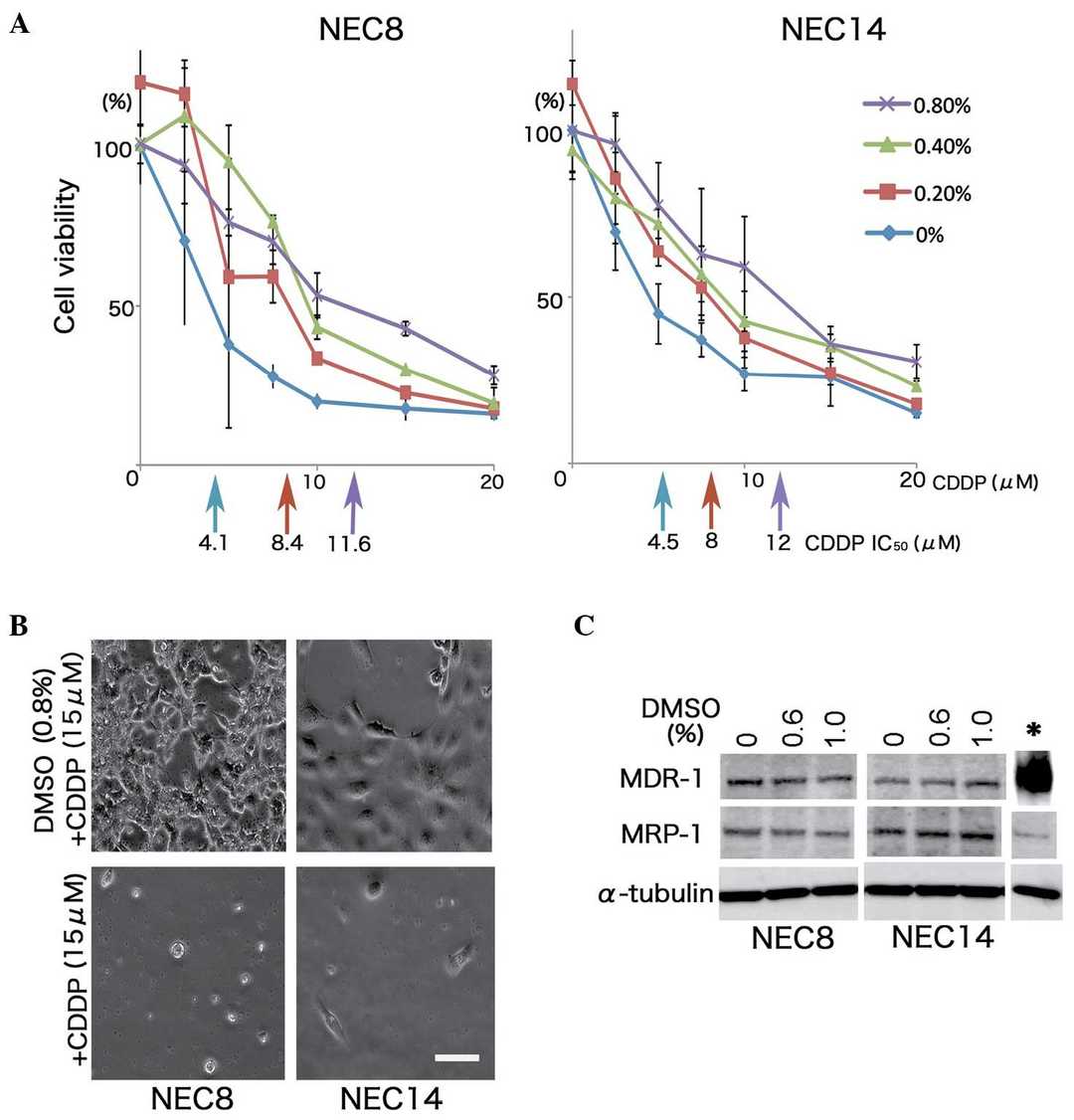 Fig. 1. DMSO enhances resistance to CDDP without induction of MDR-1 or MRP-1 in human EC cells (Kita H, Okamoto K, et al., 2016).
Fig. 1. DMSO enhances resistance to CDDP without induction of MDR-1 or MRP-1 in human EC cells (Kita H, Okamoto K, et al., 2016).
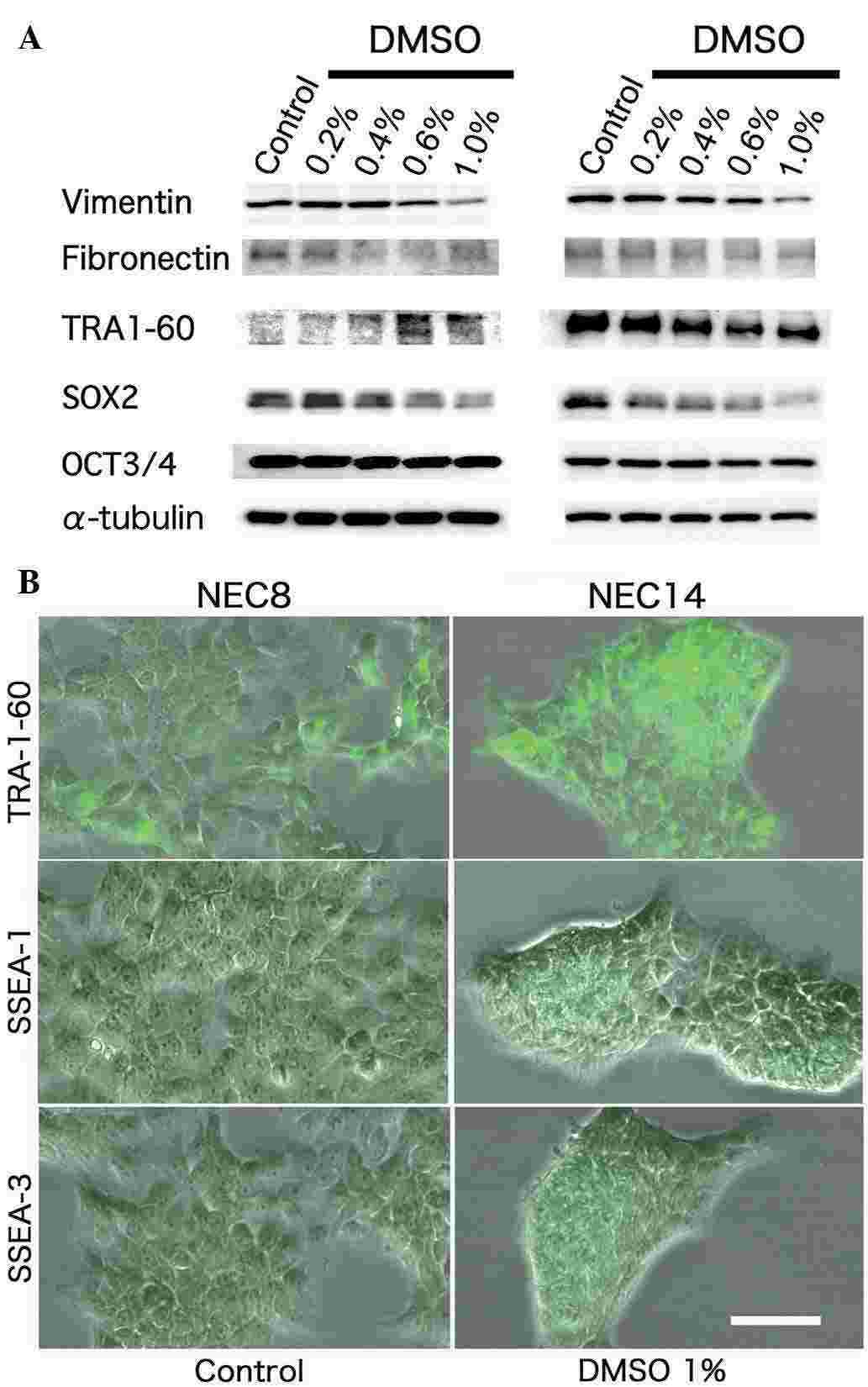 Fig. 2. DMSO perturbs differentiation and reduces the stemness characteristics of human embryonic carcinoma cells (Kita H, Okamoto K, et al., 2016).
Fig. 2. DMSO perturbs differentiation and reduces the stemness characteristics of human embryonic carcinoma cells (Kita H, Okamoto K, et al., 2016).
Antimigration, Anti-Invasion, Antiproliferation snd Anti-Colony Formation Effects of MPHOSPH1 Knockdown in Embryonal Carcinoma Cell Lines
Testicular germ cell tumors (TGCTs) are prevalent in young men, with non-seminomas having a worse prognosis than pure seminomas. MPHOSPH1, a kinesin superfamily protein, is involved in cytokinesis and is upregulated in various cancers, potentially interacting with STAT3 signaling. Abe et al. examined the antitumor effect of MPHOSPH1 knockdown in embryonal carcinoma cell lines. Both of the siMPHOSPH1-transfected embryonal carcinoma cell lines, NEC8 and NEC14, showed reduced cell migration and invasion compared to the control siRNA-transfected cells (p<0.001 for both) (Fig. 3B and C). Similarly, reduced cell proliferation and colony formation were also recognized in NEC8 and NEC14 (p<0.001 for both) (Fig. 3D and E).
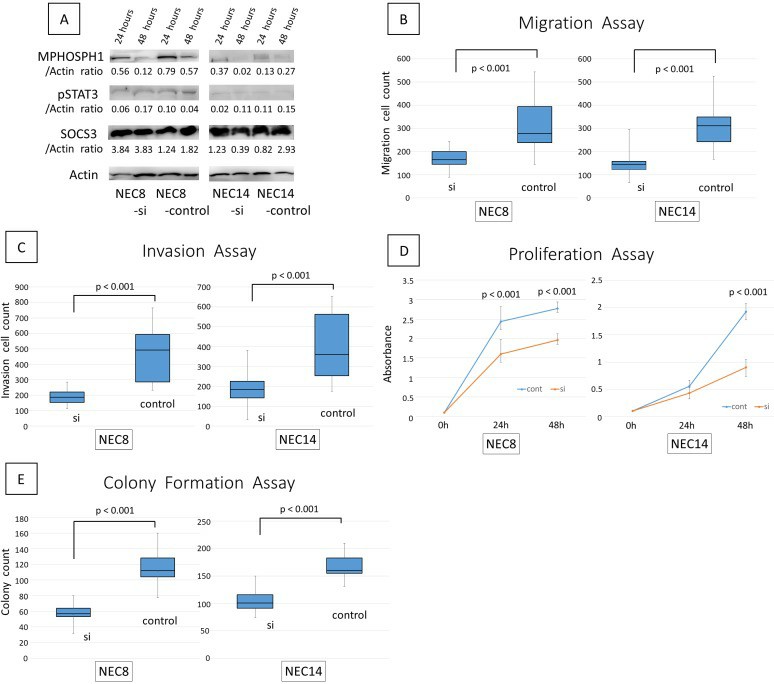 Fig. 3. The efficacy of MPHOSPH1 knockdown using small-interfering RNA (siRNA) (Abe T, Kohashi K, et al., 2018).
Fig. 3. The efficacy of MPHOSPH1 knockdown using small-interfering RNA (siRNA) (Abe T, Kohashi K, et al., 2018).
Ask a Question
Write your own review
- You May Also Need
- Adipose Tissue-Derived Stem Cells
- Human Neurons
- Mouse Probe
- Whole Chromosome Painting Probes
- Hepatic Cells
- Renal Cells
- In Vitro ADME Kits
- Tissue Microarray
- Tissue Blocks
- Tissue Sections
- FFPE Cell Pellet
- Probe
- Centromere Probes
- Telomere Probes
- Satellite Enumeration Probes
- Subtelomere Specific Probes
- Bacterial Probes
- ISH/FISH Probes
- Exosome Isolation Kit
- Human Adult Stem Cells
- Mouse Stem Cells
- iPSCs
- Mouse Embryonic Stem Cells
- iPSC Differentiation Kits
- Mesenchymal Stem Cells
- Immortalized Human Cells
- Immortalized Murine Cells
- Cell Immortalization Kit
- Adipose Cells
- Cardiac Cells
- Dermal Cells
- Epidermal Cells
- Peripheral Blood Mononuclear Cells
- Umbilical Cord Cells
- Monkey Primary Cells
- Mouse Primary Cells
- Breast Tumor Cells
- Colorectal Tumor Cells
- Esophageal Tumor Cells
- Lung Tumor Cells
- Leukemia/Lymphoma/Myeloma Cells
- Ovarian Tumor Cells
- Pancreatic Tumor Cells
- Mouse Tumor Cells
